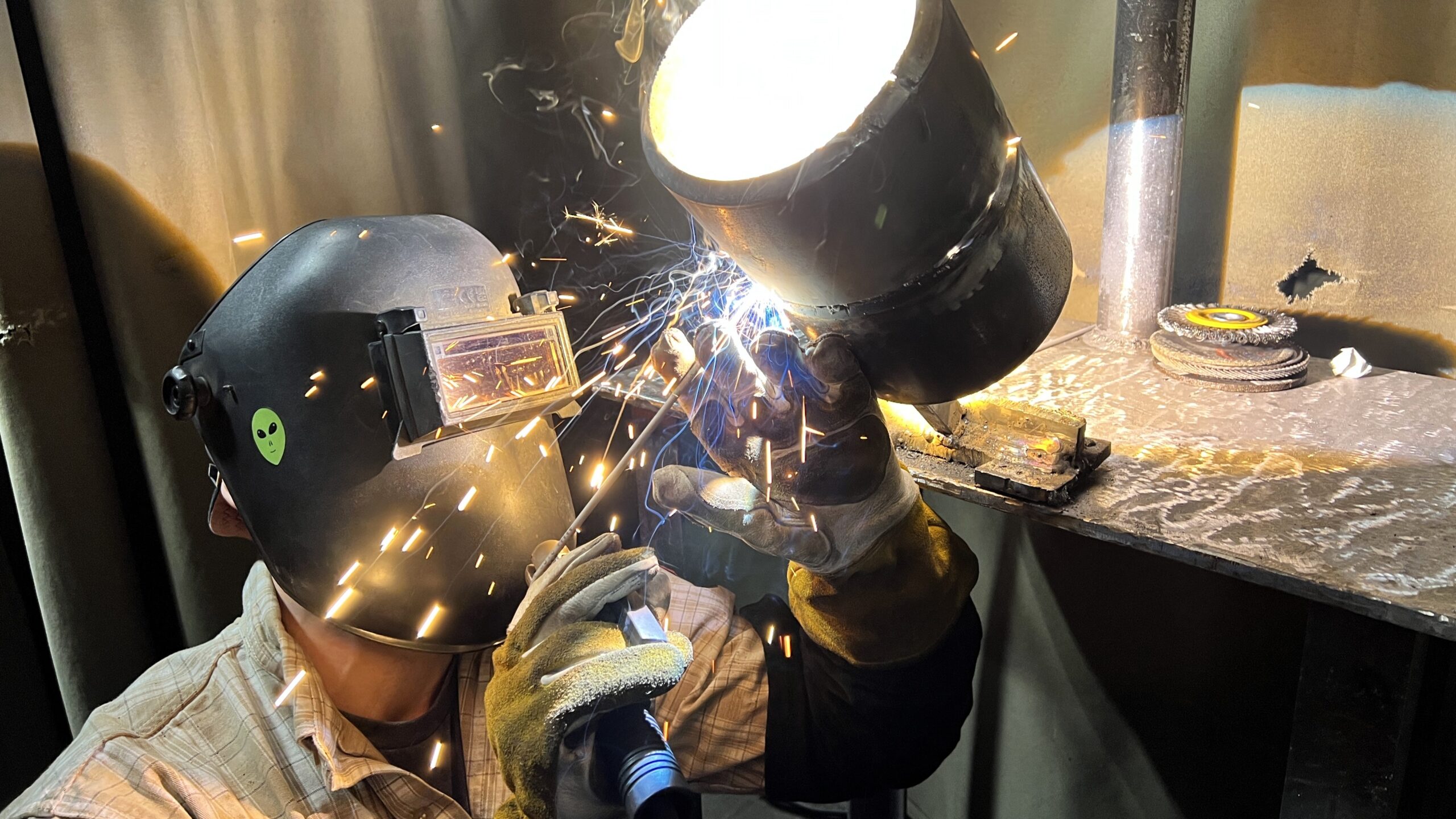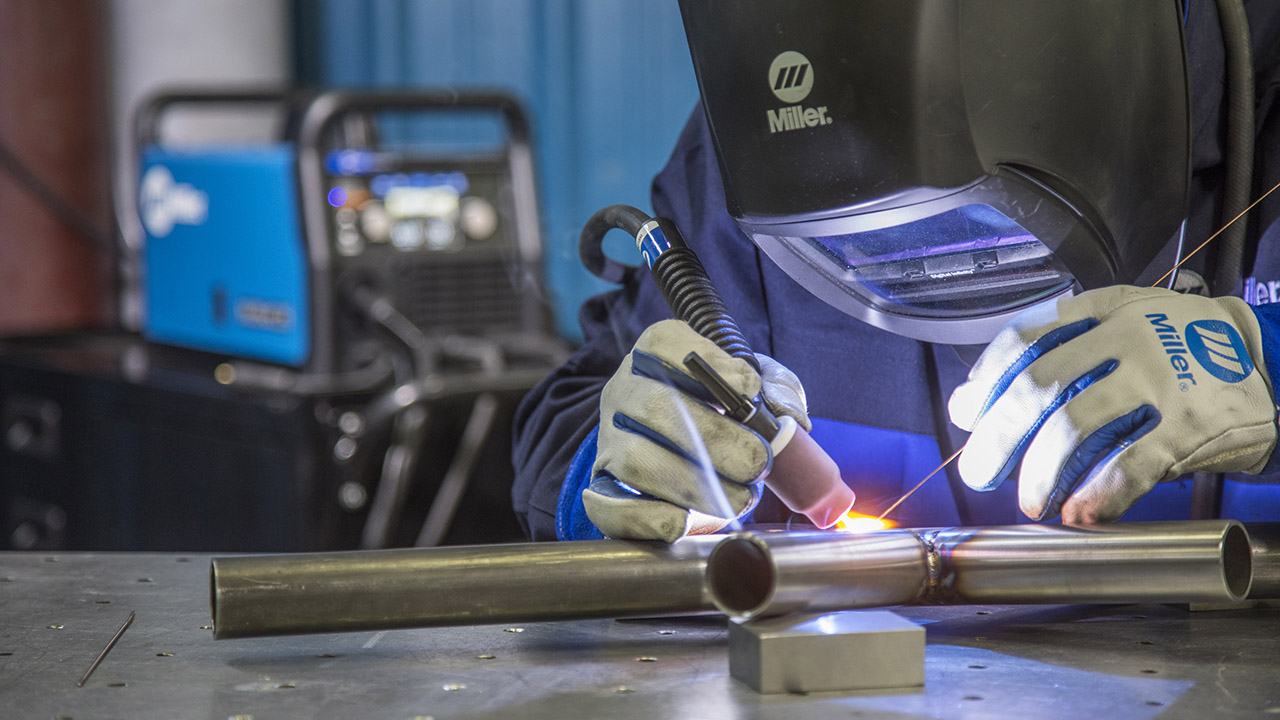What causes misalignment happens and what Belgrade Fabrication solves it
Wiki Article
Typical Welding Fixing Issues and How to Address Them Properly
Welding repairs frequently come across a series of problems that can threaten the integrity of the final item. Common problems include poor penetration, porosity, and misalignment, amongst others. Each issue provides one-of-a-kind challenges that call for particular techniques for resolution. Comprehending these problems is necessary for welders intending to boost their end results and skills. This discussion will certainly explore these usual welding repair concerns and reliable methods to resolve them.Insufficient Penetration
Insufficient penetration happens when the weld steel fails to totally fuse with the base product, leading to weak joints and possible architectural failings. This concern commonly originates from not enough heat input, incorrect electrode angle, or improper welding rate. Welders may encounter inadequate penetration because of a mistake of the required parameters for a specific material thickness or kind. In addition, contamination on the base product's surface area can impede effective bonding, intensifying the trouble. To address insufficient infiltration, welders must ensure ideal setups on their equipment and keep a tidy work surface. Routine evaluation of welds is advised to identify any kind of deficiencies early, permitting for timely modifications and the prevention of jeopardized structural honesty in bonded assemblies.Porosity
Porosity is a typical flaw in welded joints that shows up as tiny gas bubbles trapped within the weld steel. This problem can compromise the stability of the weld, causing lowered toughness and prospective failing under stress and anxiety. Fabrication. Porosity usually develops from contamination, moisture, or inappropriate welding techniques, which enable gases to escape into the liquified weld swimming pool. To deal with porosity, welders should ensure appropriate surface area preparation, keep a clean workplace, and use ideal welding specifications. In addition, selecting the ideal filler product and shielding gas can minimize gas entrapment. Normal inspection and screening of welds can aid recognize porosity early, assuring prompt corrective actions are taken, thus preserving the top quality and dependability of the bonded frameworkMisalignment
Imbalance in welding can develop from various factors, including incorrect configuration and thermal development. Understanding the source is essential for reliable resolution. Several improvement methods are readily available to realign components and ensure architectural honesty.Causes of Imbalance
Welding misalignment frequently stems from a range of underlying issues that can jeopardize structural integrity. One main cause is improper fit-up of parts prior to welding, which can bring about voids and irregular surface areas. Variants in thermal growth during the welding procedure can likewise lead to distortion, especially if the products being joined have various coefficients of development. Additionally, inadequate clamping and fixturing may stop working to hold components safely in position, bring about motion during welding. Improperly conserved tools, including welding machines and tools, might present inconsistencies in the weld bead, more adding to misalignment. Ultimately, operator mistake, coming from not enough training or experience, can likewise play a substantial role in producing misaligned welds.Improvement Methods Offered
Resolving misalignment successfully requires a mix of rehabilitative techniques customized to the certain issues handy. One common approach is using jigs or components to hold parts in the proper setting during welding, guaranteeing consistent positioning. In addition, preheating the products can help in reducing distortion and improve fit-up. For significant imbalance, mechanical realignment methods, such as making use of hydraulic jacks or clamps, can be used to deal with the position before welding. Post-weld heat therapy may also be necessary to relieve stress and anxieties triggered by imbalance. Finally, cautious evaluation and adjustment throughout the configuration stage can prevent misalignment problems from coming to be substantial problems, advertising a smoother welding process and improving total architectural honesty.Distortion
Distortion is a typical obstacle in welding that can develop from different aspects, including unequal home heating and cooling. Comprehending the causes of distortion is crucial for carrying out effective prevention methods. Resolving this concern not only boosts structural integrity however likewise improves the total high quality of the weld.Reasons for Distortion
When based on the intense warmth mig aluminum of welding, materials usually go through adjustments that can cause distortion. This phenomenon mainly develops from thermal expansion and contraction during the welding procedure. As the weld location warms up, the product expands; upon cooling, it contracts, which can produce internal anxieties. Additionally, unequal heating across a work surface can intensify these tensions, leading to warping or bending. The sort of material likewise plays a substantial role; steels with varying thermal conductivity and coefficients of expansion may react in different ways, causing unpredictable distortions. In addition, poor joint layout and inadequate fixturing can add to misalignment during welding, boosting the likelihood of distortion. Understanding these causes is important for efficient welding repair work and avoidance techniques.Avoidance Techniques
Effective prevention methods for distortion throughout welding focus on controlling heat input and guaranteeing proper joint design. Maintaining a consistent warmth input aids to decrease thermal growth and contraction, which can cause distortion. Utilizing strategies such as preheating the work surface can additionally minimize the temperature level slope, promoting uniform home heating. Additionally, selecting appropriate joint styles, such as T-joints or lap joints, can enhance security and reduce anxiety focus. Carrying out correct fixturing to safeguard the workpieces in position further aids in maintaining positioning throughout the welding process. Ultimately, staggered welding sequences can distribute heat extra equally, preventing localized distortion. By applying these techniques, welders can substantially reduce the probability of distortion and improve the general top quality of their welds.Breaking
Cracking is an usual problem experienced in welding repairs, usually resulting from numerous elements such as incorrect air conditioning prices, material option, or inadequate joint prep work. The event of cracks can significantly compromise the integrity of the weld, leading to prospective failings during operation. To resolve this issue, welders have to initially evaluate the origin causes, making sure that products are suitable and properly selected for the specific application. Furthermore, managing the cooling rate throughout the welding process is necessary; rapid air conditioning can cause anxiety and bring about cracking. Proper joint style and preparation additionally add to lessening the danger. Implementing these techniques can improve weld top quality and durability, ultimately minimizing the chance of splitting in finished weldments.
Insufficient Blend
A considerable issue in welding repair work is insufficient blend, which occurs when the weld click this steel does not sufficiently bond with the base product or previous weld passes - Belgrade Fabrication. This issue can bring about weaknesses in the joint, possibly compromising the honesty of the welded structure. Elements contributing to insufficient fusion consist of insufficient heat input, inappropriate welding strategy, and contamination of the surface areas being joined. To resolve this problem efficiently, welders ought to guarantee correct pre-weld cleaning and surface prep work, along with change their welding specifications to attain adequate infiltration and combination. Normal evaluation throughout the welding process can likewise aid identify insufficient fusion early, enabling prompt rehabilitative steps to enhance the general high quality of the weldOverheating
While welding fixings can enhance structural integrity, overheating provides a significant challenge that can cause material deterioration. Too much warm throughout welding can change the mechanical buildings of steels, resulting in reduced stamina, boosted brittleness, and warping. This sensation is specifically important in high-stress applications where architectural dependability is critical. Recognizing getting too hot can include visual assessments for discoloration or distortion, along with keeping track of temperature during the welding process. To reduce the threats connected with overheating, welders should use appropriate techniques, such as regulating warm visit their website input, adjusting travel speed, and utilizing appropriate filler materials. Furthermore, implementing pre- and post-weld warm therapies can assist bring back product buildings and enhance the overall quality of the repair work, making sure long-lasting efficiency and safety.Frequently Asked Questions
What Are the Typical Indicators of a Welding Problem?

How Can I Examine My Welds for Quality?
To test welds for top quality, one can use aesthetic inspections, ultrasonic testing, and radiographic methods. Each strategy guarantees architectural integrity, recognizes flaws, and verifies adherence to specified requirements, ultimately improving the integrity of the bonded joints.What Security Safety Measures Should I Take While Welding?
When welding, one must focus on safety by using appropriate personal safety equipment, ensuring appropriate ventilation, securing flammable materials away, preserving a tidy work area, and knowing environments to protect against injuries and accidents.Can I Fix a Weld Without Redoing the Entire Joint?
Repairing a weld without renovating the entire joint is feasible, relying on the damage (Fabrication). Methods such as grinding, including filler material, or using a welding process can efficiently address particular defects while protecting the bordering frameworkWhat Equipment Are Important for Efficient Welding Repairs?
Necessary devices for reliable welding repair work include a welding device, wire brush, grinder, safety gear, clamps, and filler products. Each device plays an important function in ensuring high quality and safety during the fixing procedure. Porosity typically develops from contamination, wetness, or incorrect welding strategies, which enable gases to get away right into the molten weld pool. Badly kept equipment, including welding equipments and tools, might present variances in the weld bead, more contributing to misalignment. When subjected to the extreme heat of welding, materials typically go through adjustments that can lead to distortion. Fracturing is a typical problem experienced in welding repairs, often resulting from various variables such as incorrect air conditioning rates, product choice, or insufficient joint prep work. A significant problem in welding fixings is incomplete blend, which takes place when the weld steel does not effectively bond with the base material or previous weld passes.Report this wiki page